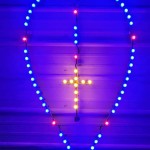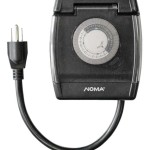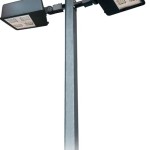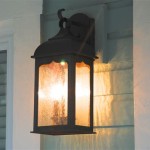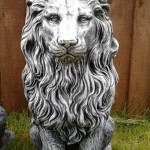Outdoor Area Light Mounting Arm Poles: A Comprehensive Guide
Outdoor area light mounting arm poles are essential components of exterior lighting systems. They provide elevated support for luminaires, ensuring optimal light distribution and enhancing visibility in various outdoor settings. Selecting the appropriate pole involves considering factors like height, material, mounting arm configuration, and environmental conditions.
Key Factors Influencing Pole Selection
Several factors contribute to choosing the right mounting arm pole. Careful consideration of these aspects ensures effective lighting design and long-term structural integrity.
Pole Height: Pole height significantly impacts light distribution. Taller poles provide broader coverage, suitable for large areas like parking lots, while shorter poles offer more focused illumination for walkways and smaller spaces. Height selection should align with the intended application and desired lighting coverage.
Material and Finish: Common pole materials include steel, aluminum, and fiberglass. Steel offers high strength and durability but requires protective coatings against corrosion. Aluminum provides a lighter weight alternative, while fiberglass offers excellent corrosion resistance. The chosen finish impacts aesthetics and longevity, with options like powder coating and galvanization providing enhanced protection.
Mounting Arm Configuration: Mounting arms extend horizontally from the pole, allowing precise positioning of luminaires. Various configurations exist, including straight arms, single mast arms, and double mast arms. The choice depends on the specific lighting requirements and desired aesthetic appearance.
Wind Load Capacity: Poles must withstand wind forces without compromising structural stability. Wind load capacity is a crucial parameter, especially in areas prone to high winds. Engineers calculate the appropriate wind load based on local wind speed data and pole design, ensuring long-term safety and reliability.
Understanding Pole Materials and Their Applications
Different materials offer distinct advantages and disadvantages for outdoor area light mounting arm poles. Selecting the appropriate material depends on the specific application and environmental factors.
Steel Poles: Steel is a widely used material due to its high tensile strength and affordability. Steel poles are robust and capable of supporting heavy luminaires. However, they require protective coatings, such as galvanization or powder coating, to prevent rust and corrosion.
Aluminum Poles: Aluminum offers a lightweight and corrosion-resistant alternative to steel. Aluminum poles are easier to install and transport, reducing installation costs. They are well-suited for coastal environments where salt spray can accelerate corrosion in steel poles.
Fiberglass Poles: Fiberglass poles possess excellent corrosion resistance and non-conductivity. They are ideal for environments with high humidity, salt spray, or chemical exposure. Fiberglass poles are also lightweight and require minimal maintenance.
Mounting Arm Configurations and Their Benefits
Mounting arm configurations play a vital role in light distribution and overall aesthetics.
Straight Arms: Straight arms extend horizontally from the pole, providing a simple and cost-effective solution for mounting luminaires. They are suitable for applications requiring direct illumination beneath the pole.
Single Mast Arms: Single mast arms extend outwards and slightly upwards, offering greater reach and improved light distribution. They are commonly used for street lighting and parking lot illumination.
Double Mast Arms: Double mast arms feature two arms extending in opposite directions, allowing for broader coverage with a single pole. They are ideal for illuminating large areas like intersections and roadways.
Installation and Maintenance Considerations
Proper installation and regular maintenance are essential for the longevity and performance of outdoor area light mounting arm poles.
Foundation and Anchoring: A stable foundation is critical for ensuring pole stability. Appropriate anchoring methods, including concrete foundations and anchor bolts, are essential to prevent pole movement and ensure long-term structural integrity.
Wiring and Electrical Connections: Electrical wiring should be conducted by qualified electricians following local codes and regulations. Proper grounding and weatherproof connections are crucial for safety and reliable operation.
Lighting Design and Luminaire Selection
The choice of luminaire and its placement on the mounting arm significantly influence lighting performance.
Luminaire Type: Various luminaire types, including LED, HID, and fluorescent, are available, each with its own characteristics and energy efficiency levels. Selecting the right luminaire depends on the intended application and desired light output.
Light Distribution Pattern: Luminaires offer different light distribution patterns, including Type I, Type II, Type III, and Type V. The chosen pattern should match the area's geometry and desired illumination levels.
Environmental and Regulatory Compliance
Compliance with environmental regulations and local codes is essential when installing outdoor lighting.
Dark Sky Compliance: Dark sky compliant luminaires minimize light pollution by directing light downwards, reducing upward light spill. These fixtures help preserve the night sky and minimize the impact on wildlife.
Local Codes and Regulations: Adhering to local codes and regulations regarding pole height, setbacks, and lighting intensity is crucial for ensuring safety and compliance with local ordinances.
Long-Term Performance and Durability
Investing in high-quality materials and proper maintenance practices ensures long-term performance.
Corrosion Protection: Protective coatings, like galvanization or powder coating, are essential for preventing corrosion and extending the lifespan of steel poles. Regular inspections and maintenance help identify and address any signs of corrosion early on.
Regular Inspections and Maintenance: Periodic inspections of the pole, mounting arm, and luminaire are crucial for identifying potential issues, like loose bolts or damaged wiring, and ensuring the continued safe and efficient operation of the lighting system.

Outdoor Area Light Mounting Arm Pole Eh10236gy The Home Depot

Area Light Pole Mounting Arm By Lithonia Lighting At Lumens Com

Torchstar Area Light Mounting Arm Security Pole For Dusk To Dawn Led Barn Yard Lights Iron Housing Anti Rust Broe Com

All Pro 2 Ft To Threaded Extension Pole In The Poles Department At Com

Torchstar Barn Light Mounting Arm Sy Pole Only For Our Dusk To Dawn Led Yard Lights Iron Housing Anti Rust Broe Com

Street Light Pole Mounting Arm Black Metal Thickened Pipes Rustproof Waterproof Barn Fixture Adaptor Outdoor For Led Wall Mounted Thicken Temu

Light Pole Mount Mounting Brackets Extension Arm For Outdoor Fixtures Post

Light Poles Outdoor Lamp Post Solar Decorative Arm Mount Complet Pole Ethiopia Led Electric Street Lighting 3 China Made In Com

4 Light Bullhorn Bracket Quad Outdoor Street Flood Mounting

Parking Lot Lighting Commercial Led Fixtures

